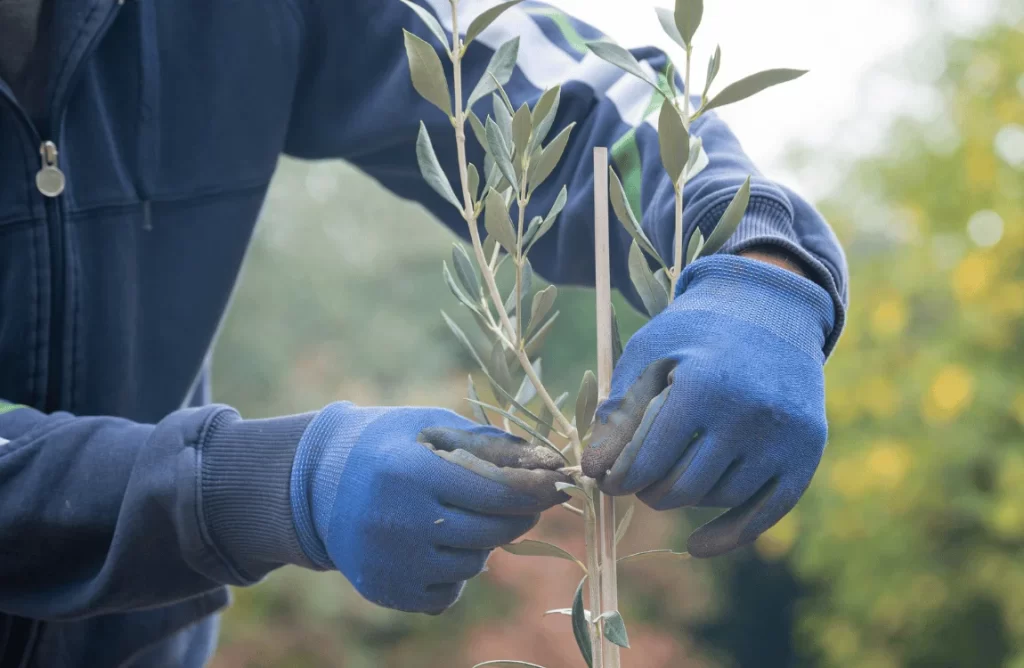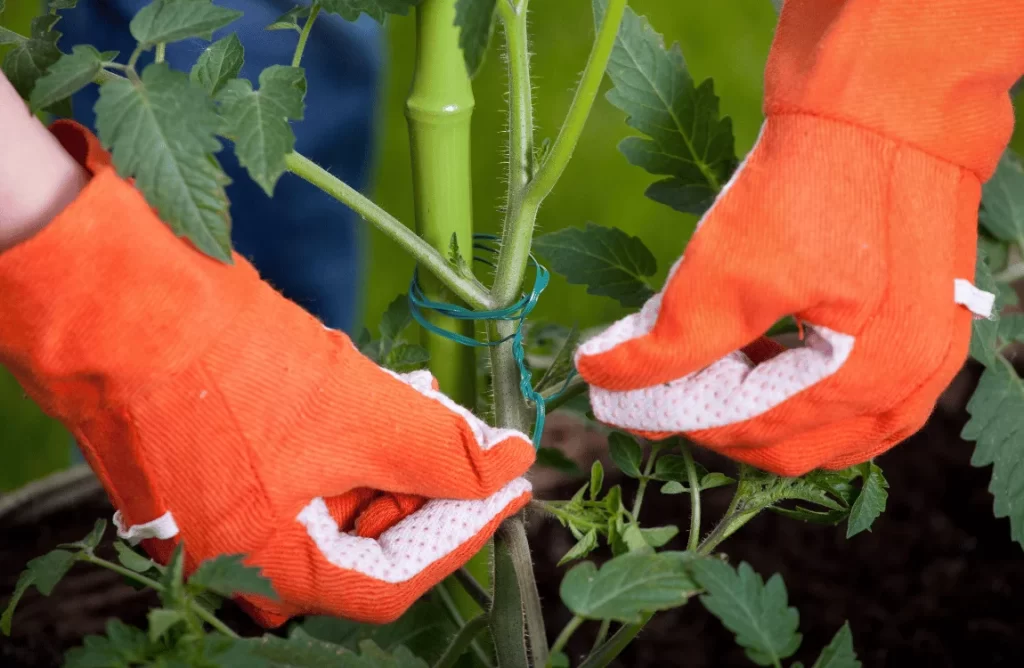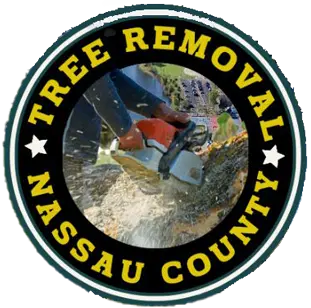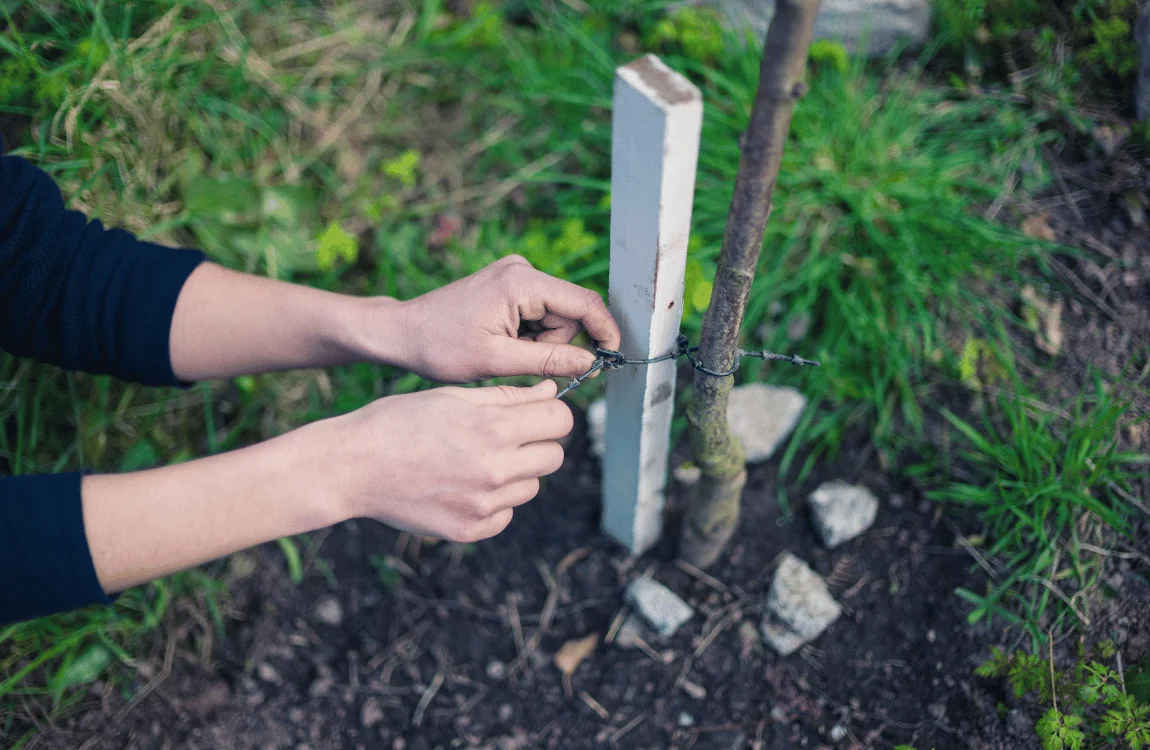Tree stakes should typically be removed after one to two growing seasons. Leaving them in place longer can hinder the tree’s development.
Selecting the right moment to remove tree stakes is a key step in nurturing young trees toward healthy maturity. Tree stakes are often used to stabilize saplings and protect them from wind damage, supporting their growth upright. While they provide necessary support initially, keeping stakes too long can prevent trees from gaining the strength to stand on their own.
As trees develop, they rely on the natural sway from the wind to strengthen their trunks and root systems. By removing stakes at the appropriate time, usually between one and two years after planting, gardeners enable trees to build resilience and grow sturdy. This critical task ensures tree vitality and reduces the risk of long-term structural weaknesses.

Reasons To Remove Tree Stakes
Understanding the correct time to remove tree stakes is crucial for healthy tree development. While staking provides initial support, it is important to appreciate that this assistance is temporary. Knowing how and when to remove stakes helps trees grow strong and independent.
The Purpose Of Tree Stakes
Tree stakes play a fundamental role in the early stages of a tree’s life. They provide support against strong winds and help to ensure the tree grows straight. Nevertheless, the ultimate goal is to foster a tree that can support itself. Stakes fulfill several key functions:
- Stabilization for a tree’s root system in its nascent stages
- Protection against environmental factors like wind or heavy rain
- Assistance in maintaining structure and direction of growth
When Tree Stakes Are No Longer Needed
There comes a pivotal moment in a tree’s life cycle when it is ready to stand on its own. Recognizing this time is critical for the tree’s continued growth. Signs that indicate the removal of tree stakes should be considered include:
| Indicator | Description |
|---|---|
| Root Establishment | The tree’s root system has developed sufficiently to anchor the tree without assistance. |
| Trunk Strength | The trunk shows signs of being able to withstand typical weather conditions. |
| Time Period | Generally, stakes are needed for the first 1-2 years after planting. |
Failure to remove stakes at an appropriate time can lead to a reliance on artificial support, affecting trunk development and root growth. For the full benefit of staking to be realized, removal should be timely to encourage tree resilience.

Signs That Tree Stakes Should Be Removed
Welcome to our guide on the right time to remove tree stakes. Many gardeners and arborists emphasize the importance of supporting young trees as they grow, but it’s equally vital to recognize when those aids are no longer needed. Keeping stakes in place for too long can actually hinder a tree’s development. Let’s dive into the definitive signs that indicate when it’s safe to remove these supports and allow your tree to stand tall on its own.
Mature Tree Growth
One of the clearest signs that it’s time to remove tree stakes is when you observe mature tree growth. This doesn’t just mean that the tree has reached a certain height; it encompasses a range of growth milestones. Look for:
- Thickening of trunk: The trunk should have expanded and should no longer sway with light pressure.
- Bark development: A solid, matured bark texture indicates that the tree is ready to withstand the elements.
- Crown expansion: A fuller crown that’s well established suggests that the tree has developed enough natural support.
Once these characteristics are notable, the supporting stakes may be doing more harm than good, potentially restricting natural movement and growth.
Strong Root Establishment
Another critical milestone for stake removal is strong root establishment. The roots are the anchor of the tree, and once they are securely spread and deeply embedded, the tree is typically ready to stand unsupported. Signs of a well-established root system include:
- Visible surface roots: Not all tree species will show surface roots, but for those that do, it’s a sign of growth.
- Resistance to movement: Gently try to rock the tree back and forth. If the tree doesn’t move, or moves very little, it’s a good indicator that the roots are well-developed.
These indicators of root health and strength can give you the confidence to safely remove tree stakes, knowing the tree is ready to endure diverse weather conditions and remain upright.
Always remember that the timing for stake removal can vary depending on the tree species, the planting environment, and the initial size of the tree when planted. In general, however, stakes should not be needed for more than one to two growing seasons. Observing the tree’s development and using these signs as a guide will lead to an optimal decision about the right time to permit your tree to grow freely.
Steps To Safely Remove Tree Stakes
Staking trees upon planting provides the necessary support for young trees to establish roots and stand tall. But there comes a time when support systems, such as stakes, must be removed to avoid causing damage or hindering the natural growth and strength of the tree. The process of stake removal should be approached with care to ensure the health and stability of the tree. Follow these steps to ensure that you remove tree stakes safely and effectively.
Assessing Tree Stability
Before removing any stakes, it’s imperative to judge whether the tree can stand on its own. To assess, gently sway the tree back and forth. A healthy, established tree should move at the soil line and not budge at the base. If the tree shows significant movement at the base, it may need more time with the stakes. Look for thriving new growth and solid root development as indicators of a tree ready to stand stake-free.
Gradual Stake Removal
Once you’ve determined the tree is ready, the stakes should be removed gradually to allow the tree to strengthen. Follow these steps:
- Untie or cut away any ties or straps attaching the tree to the stakes securely without damaging the tree bark or branches.
- Remove stakes in pairs if more than one was used, starting with the stakes least supporting the tree’s weight.
- If the tree shows signs of leaning or stress, consider a temporary partial support by leaving one stake for an additional few weeks.
- Check the tree’s stability again after removing each stake. This observation period is crucial to ensure it doesn’t require additional support.
- Once all stakes are removed, fill in any holes left by the stakes and gently tamp down the soil.
Routinely monitor the tree over the subsequent weeks to ensure it’s adapting well to its new, autonomous support system.
Frequently Asked Questions On When To Remove Tree Stakes
When Should Tree Stakes Be Removed?
Tree stakes should typically be removed after one to two growing seasons. This gives the tree enough time to establish its root system. Removing stakes too early can result in a weak tree, while leaving them too long may hinder growth.
What Are The Signs A Tree Is Ready For Stake Removal?
A tree is ready for stake removal when it can stand upright without support. Other signs include new growth, a robust trunk, and a well-established root system. Check for these indicators before removing stakes to ensure stability.
How Do Tree Stakes Affect Root Development?
Tree stakes provide initial stability, but over time, they can limit natural root spread and strength. Prolonged staking may weaken a tree’s root system, as roots rely on movement for proper development. Proper timing in stake removal encourages a stronger, more resilient root network.
Can Removing Tree Stakes Harm The Tree?
If done correctly, removing tree stakes should not harm the tree. However, care must be taken to avoid damaging the trunk or roots. Gently remove ties and stakes to prevent unnecessary stress or injury to the developing tree.
Conclusion
Removing tree stakes is a subtle art that balances support and growth. Aim to liberate your trees once they are strong enough to stand alone, typically after one growing season. Performing this task at the right time promotes healthier, more resilient growth. Monitor your trees regularly and free them to thrive unaided.
Happy Tree Services!




